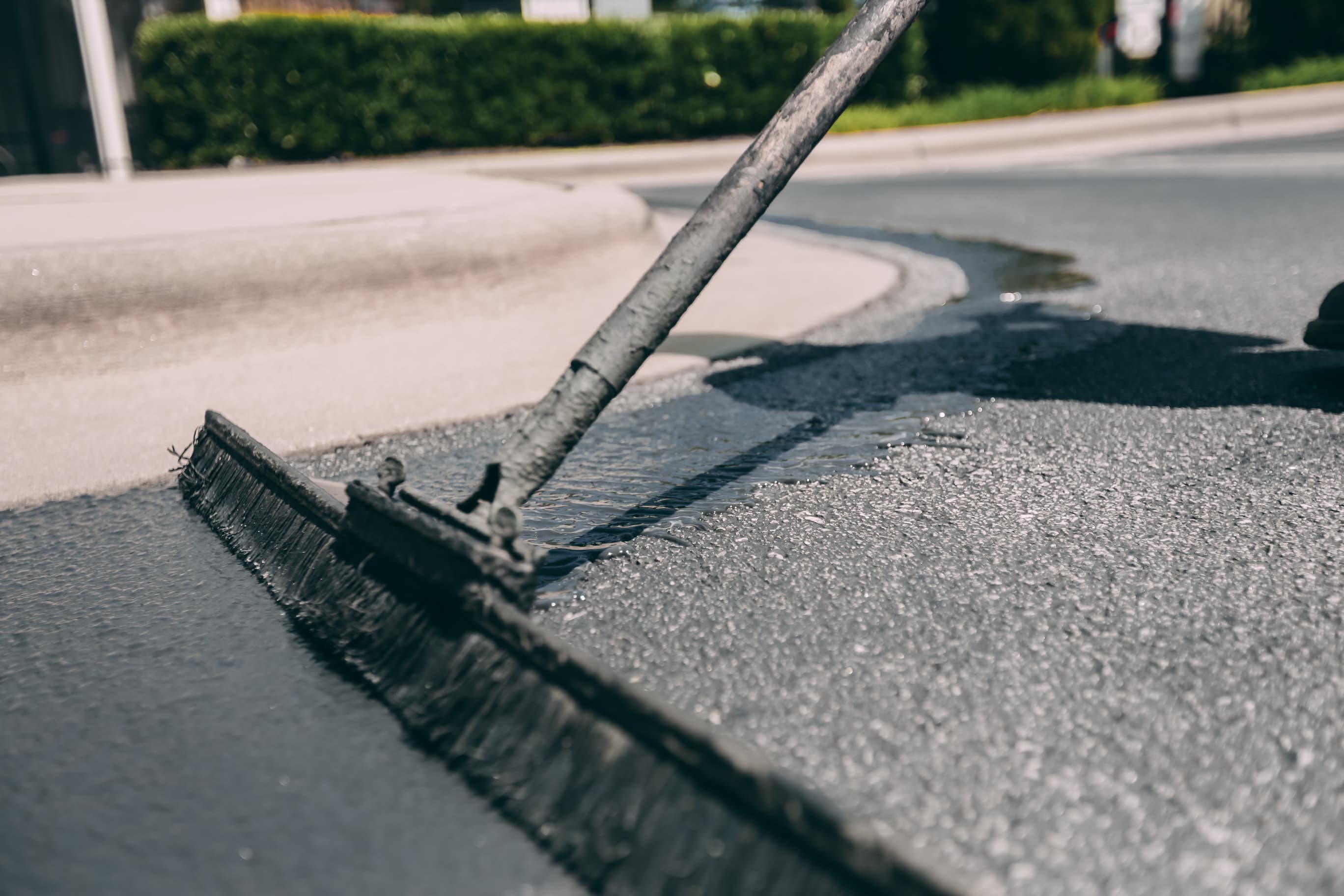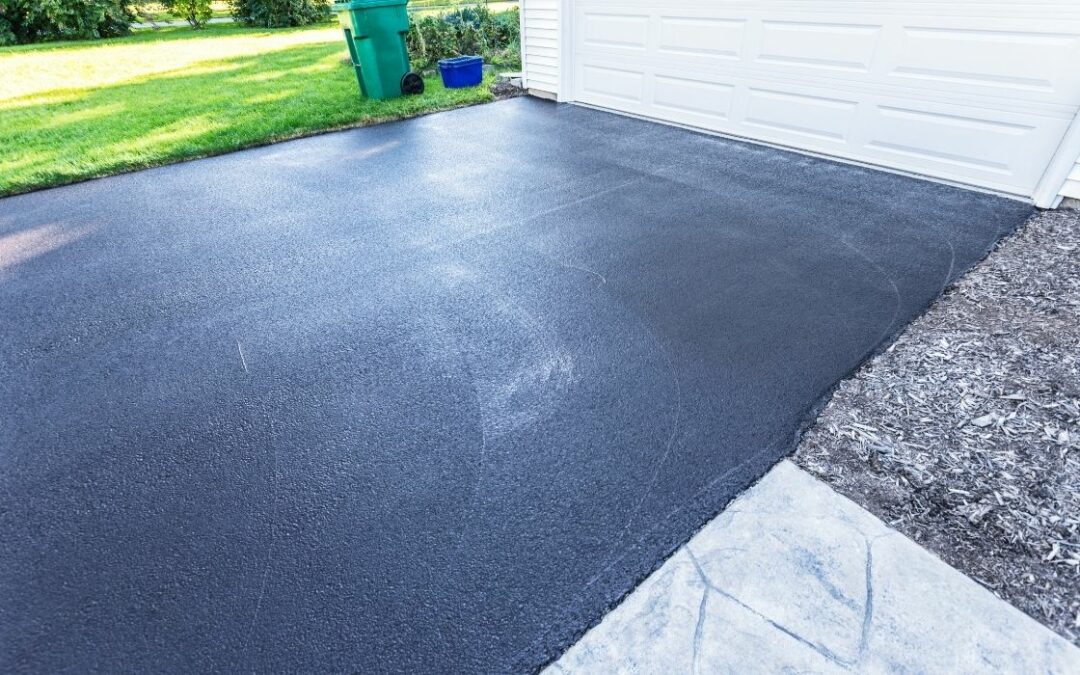Elevate Commercial Appeal: Hot Mix Asphalt Sealing for Angled Parking Lots
Elevate Commercial Appeal: Hot Mix Asphalt Sealing for Angled Parking Lots
Blog Article
Hot Mix Asphalt: A Sustainable Service for Pavement
Hot Mix Asphalt (HMA) has actually become a leading lasting choice for sidewalk options, using a myriad of ecological benefits and ingenious technologies. Its capability to recycle materials and lower power usage provides a compelling instance for its adoption in road construction tasks. Furthermore, the lasting performance and longevity of HMA make it a recommended option for infrastructure growth. As the demand for green building practices expands, discovering the nuances of HMA's sustainability can supply valuable understandings into the future of pavement remedies.
Environmental Benefits of Hot Mix Asphalt

Additionally, Warm Mix Asphalt assists to reduce metropolitan heat island effects. Its dark color takes in sunshine, lowering the quantity of warmth mirrored back into the atmosphere contrasted to lighter-colored sidewalks. This can decrease ambient temperatures in urban areas, lowering the demand for a/c and eventually minimizing energy usage.
Additionally, Hot Mix Asphalt adds to boosted stormwater administration. Its porous nature enables water to penetrate the sidewalk and reenergize groundwater products, reducing overflow and the danger of flooding. These environmental advantages make Hot Mix Asphalt a sustainable option for paving roadways and highways.
Power Effectiveness in HMA Manufacturing
Is power performance a critical aspect in the production of Warm Mix Asphalt (HMA)? Power plays a substantial role in the manufacturing of HMA, impacting both cost and environmental sustainability. One vital aspect of power efficiency in HMA manufacturing is the usage of cozy mix asphalt (WMA) innovations.
Moreover, improvements in plant modern technologies have led to more energy-efficient HMA production procedures. By optimizing power use in HMA manufacturing, the sector can decrease its carbon impact while keeping top notch pavement products.
Recyclability of Warm Mix Asphalt
The recyclability of Warm Mix Asphalt (HMA) is an essential facet of its sustainability and long-term environmental impact. HMA is just one of one of the most recycled materials in the United States, with over 100 million lots of reclaimed asphalt sidewalk (RAP) being reused annually in new pavement building. Recycling HMA provides several ecological advantages, such as minimizing the requirement for virgin products, reducing power intake throughout production, and lowering the amount of waste sent to landfills.
The procedure of recycling HMA includes grating the existing sidewalk, crushing it into smaller items, and mixing it with new aggregate and asphalt binder to create a recycled mix. This recycled mix can commonly do along with or even better than standard HMA, while calling for fewer raw products and producing reduced greenhouse gas exhausts. By including RAP right into new pavement jobs, roadway companies can save all-natural sources, reduce prices, and lessen the ecological footprint of roadway building and upkeep activities. On the whole, the recyclability of HMA plays a significant role in promoting lasting methods within the sidewalk market.

Long-Term Efficiency of HMA
Asphalt sidewalks show longevity and durability over an extended period, showing the long-lasting efficiency of Warm Mix Asphalt (HMA) The durability of HMA can be associated to its capability to endure rush hour loads, extreme climate condition, and the results of aging. Research studies have revealed that properly designed and effectively created HMA pavements can last for two decades or more with regular upkeep. The secret to taking full advantage of the long-lasting performance of HMA hinges on making use of high-quality products, following best methods in building, and applying reliable maintenance methods. Proper drainage, routine inspections, and prompt repair services are crucial for preserving the architectural honesty of HMA pavements with time. Furthermore, improvements in HMA modern technology, such as the use of polymer-modified binders and cozy mix asphalt, have actually better boosted the sturdiness and long life of HMA sidewalks. By focusing on high quality construction and upkeep techniques, HMA remains to confirm itself as a lasting and affordable remedy for resilient sidewalk facilities.

HMA: Sturdiness and Sustainability
Showing both longevity and sustainability, Warm Mix Asphalt (HMA) has come to be a keystone in the construction of long-lasting sidewalk facilities - hot mix asphalt. HMA's angled parking resilience originates from its ability to endure hefty lots, extreme weather, and high website traffic volumes, making it a dependable choice for roads, highways, and flight terminal runways. The structure of HMA, which usually consists of aggregates, binder, and filler, plays a vital role in boosting its durability and resistance to tear and put on
Furthermore, HMA's sustainability lies in its recyclability and energy-efficient manufacturing process. The ability to reuse redeemed asphalt sidewalk (RAP) in brand-new HMA mixes decreases the demand for virgin materials and reduces the ecological impact of pavement building and construction and upkeep. Additionally, the power performance of creating HMA depends on its reduced mixing temperature levels compared to various other sidewalk materials, bring about decreased energy usage and greenhouse gas discharges.
Conclusion
In conclusion, hot mix asphalt (HMA) uses a lasting service Read More Here for pavement with its eco-friendly characteristics. HMA's recyclability, power performance in manufacturing, and long-lasting toughness make it an eco-friendly choice for roadway construction. By preserving natural deposits, decreasing waste, and decreasing greenhouse gas emissions, HMA plays an essential function in advertising sustainability in infrastructure growth. Its capacity to minimize city warm island results further underscores its importance in developing resistant and ecologically conscious pavement systems.
HMA is one of the most recycled products in click to read the United States, with over 100 million heaps of reclaimed asphalt sidewalk (RAP) being reused yearly in brand-new sidewalk building and construction.The procedure of recycling HMA includes crushing the existing sidewalk, crushing it right into smaller sized pieces, and mixing it with new aggregate and asphalt binder to produce a recycled mix.Asphalt pavements demonstrate sturdiness and durability over an extended duration, mirroring the lasting efficiency of Warm Mix Asphalt (HMA) Additionally, developments in HMA modern technology, such as the usage of polymer-modified binders and warm mix asphalt, have better improved the durability and longevity of HMA pavements. The capacity to reuse reclaimed asphalt sidewalk (RAP) in brand-new HMA blends lowers the need for virgin materials and minimizes the ecological effect of pavement building and maintenance.
Report this page